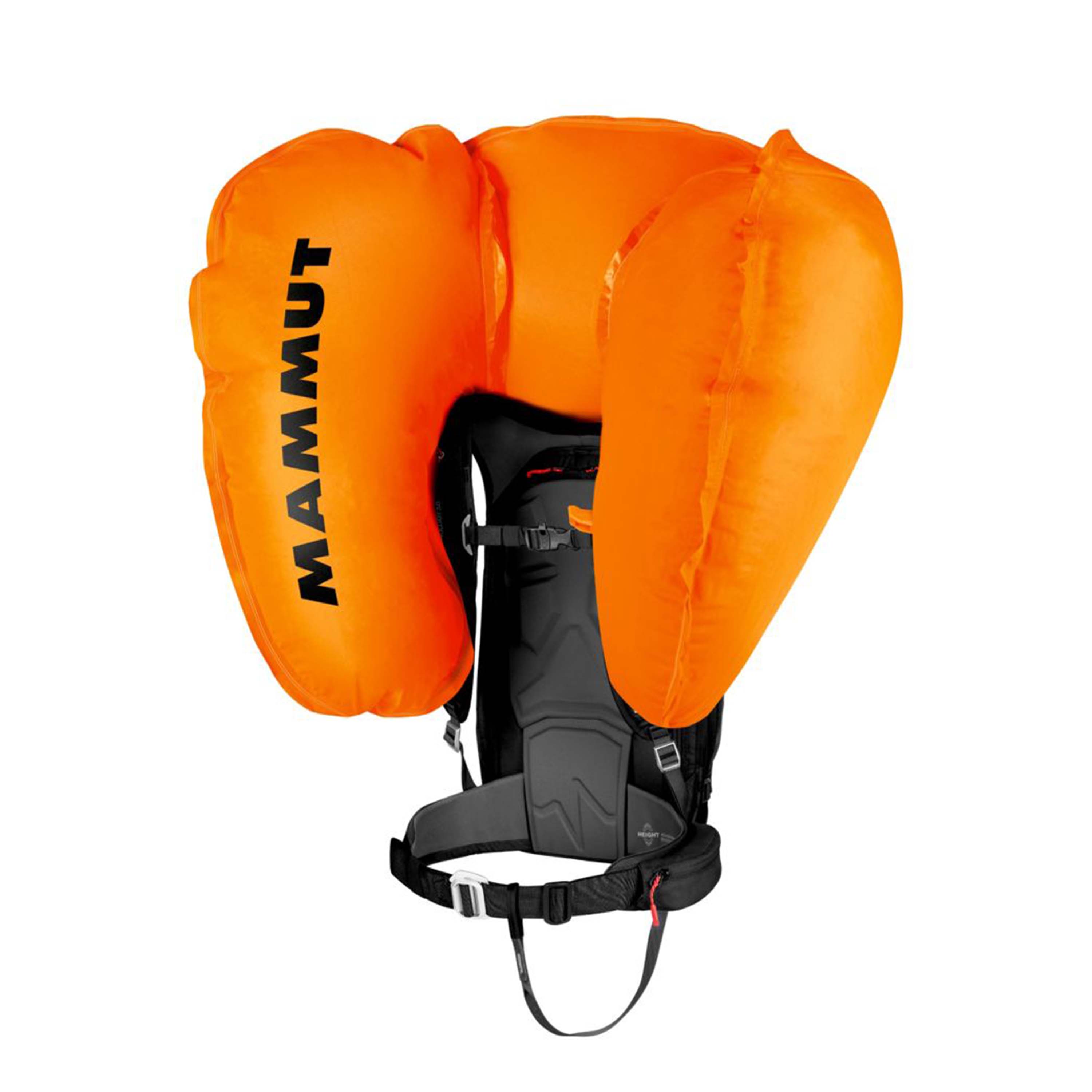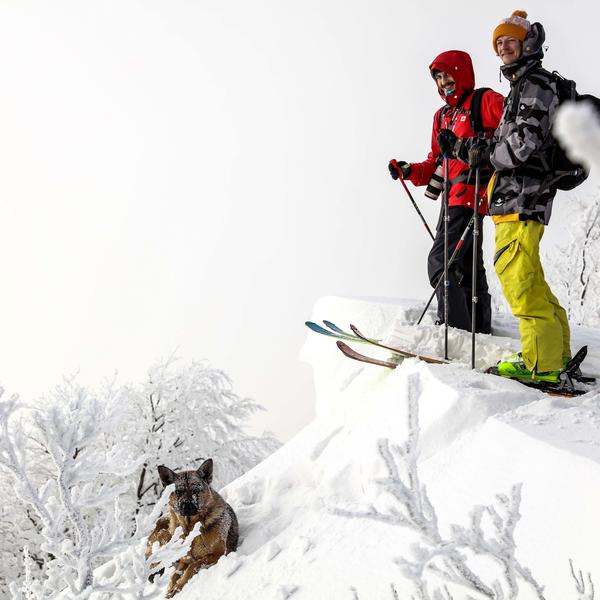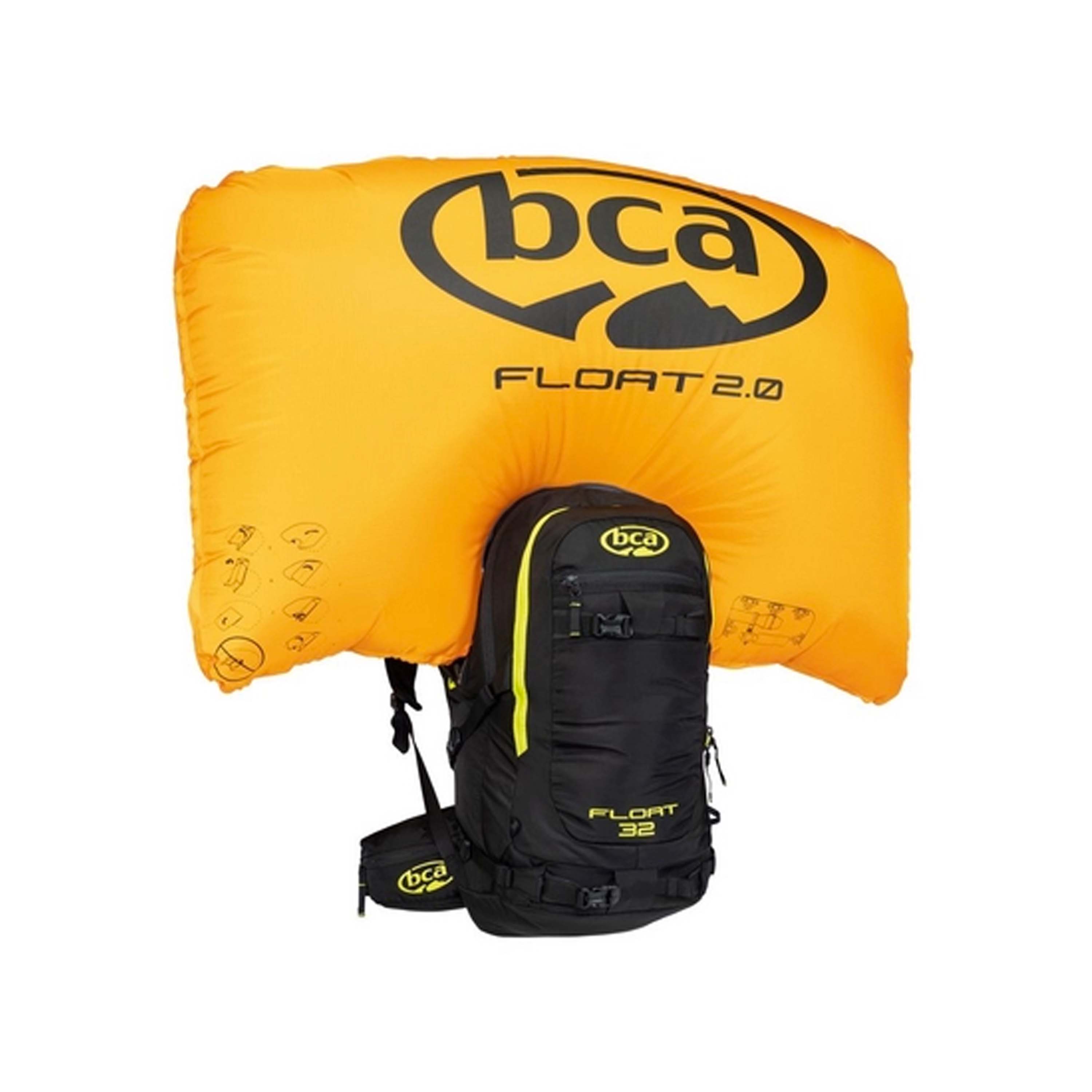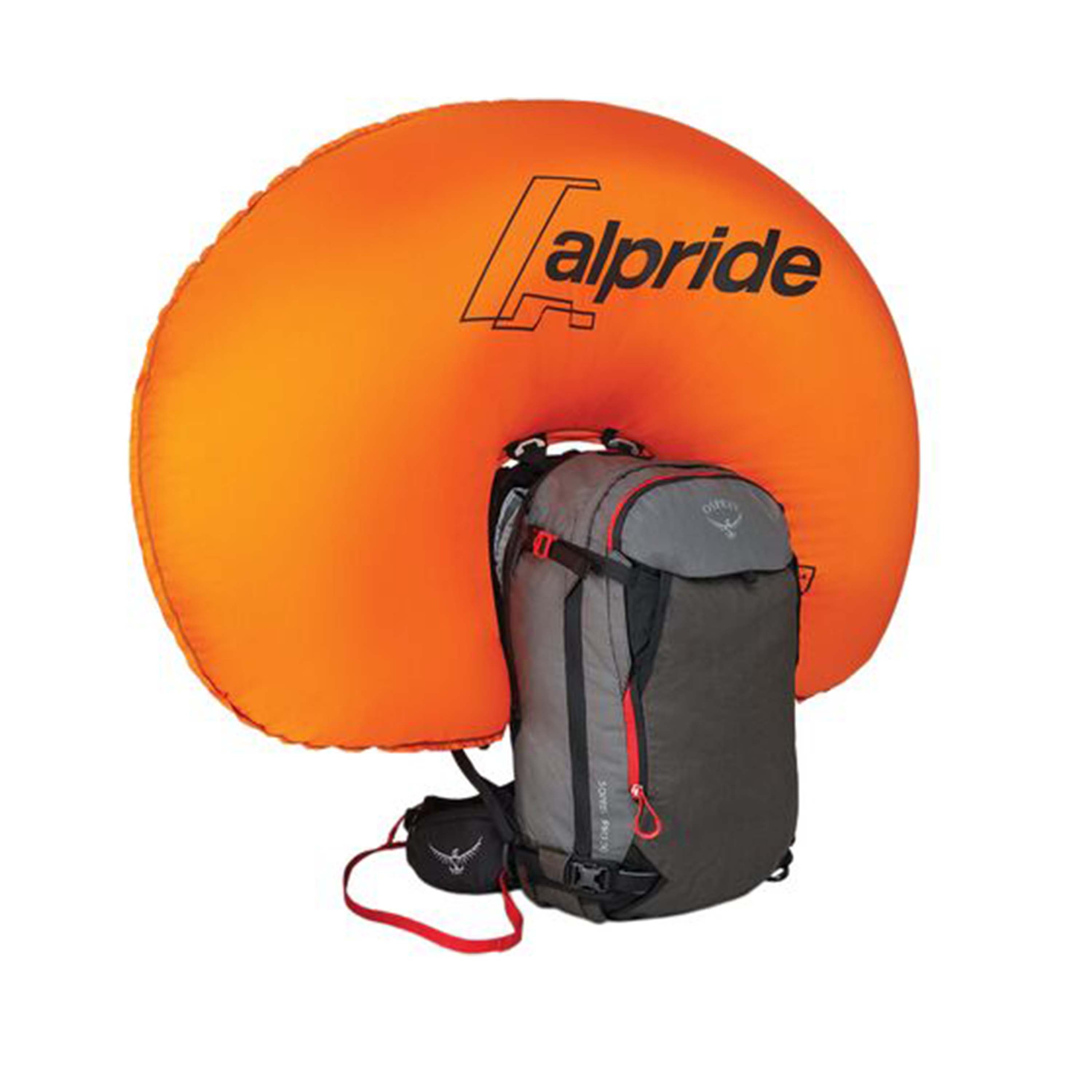Currently on the market there are two styles of avalanche backpacks: Canister Systems and Electronic Systems. Canister systems use canisters of air that are pressurized to manufacturer specifications. Electronic Systems are battery powered and inflate using a powerful fan or compressor. Both systems have an extra harness style strap that goes between the legs to prevent the backpack from sliding off in the case of an avalanche. This strap is an essential part of the system, if not secured between the legs it can cause strangulation by the chest strap when the bag inflates.
What are the Differences Between the Two Types of Avalanche Bags?
Canister System:
A canister which is filled with compressed air and needs to be refilled after being deployed
Advantages:
- Mechanical system with a simple design
- Easy to read if the canister is full
- Rapid inflation
- Easy to remove the canister when avalanche danger is low, lowering your backpack weight
- There are more options. Some brands come with the airbag integrated at purchase, others provide the bag with the system being purchased separately
- Can be lighter than Electronic Alpride E1 systems
- Generally less expensive than Electronic Alpride E1 packs
Disadvantages:
- Needs to be refilled by an authorized store after each deployment or air travel. There is also an option of a high pressure floor pump that you can travel with to refill your canister after flying or after deployment on a backcountry trip.
- Canister needs to be emptied before flying
- Difficult to practice on snow with unless you have an extra canister to use
- In some locations, it can be difficult to find a store that can fill canisters
Canister System Product Models:
Mountain Shop carries Canister System Avalanche Airbags from BCA (Backcountry Access) and Mammut. Mammut sells the canisters separately for $199 for all of their bag designs. Although the design of the canisters are different, they function the same. The bags range in volume from 20L for short laps, 30L for a single day tour, and 35-40L for multi-day tours or summits.
- BCA, Float 32
- Mammut, Pro Protection Airbag 3.0 35L - More durable material and has a bigger bag that cradles your head
- Mammut, Light Airbag 3.0 30L - lighter weight bag and has pillow shape airbag
- Mammut, Ultralight RAS 3.0 20L - smaller resort skiing bag for avalanche terrain
BCA Float 32
Electronic System (AlpRide E1 System)
An electronic system is controlled by a powerful fan or compressor. The technology is called Alpride E1 and these systems are integrated into the backpack and do not need to be “refilled with air” after they are deployed.
Advantages:
- Electronic system and can be inflated multiple times, some as many as 50 times (check the user manual of the system that you purchase to confirm the recommended inflations. Systems are generally recommended to be replaced at least every five years after use and with any signs of mechanical wear)
- Easier to practice with on the snow since you can use it after inflating the bag by packing the airbag again, or if used in an avalanche, you can pack it back up and travel back down to the car with the safety of another deployment
- Runs off rechargeable batteries or in a pinch, you can use 2 AA batteries
- Easy to see if you have a full charge
- Easy to fly with, ready to go when you land because there is no need to find a store that can fill a canister
- Can upgrade the software and firmware through a bluetooth connection with your phone
Disadvantages:
- Can be heavier than canister systems
- Approximately 1 second slower than canisters
- Takes slightly more room in the backpack
- Generally more expensive than canister backpacks
- Fewer options
Electronic Alpride E1 System Product Models:
Mountain Shop carries Electronic Alpride E1 systems from Black Diamond, Scott, and Osprey. These systems are easy to travel with, can charge at home or top off the charge in your car, and can have multiple inflations on a single charge. The bags come in different sizes, and the Black Diamond JetForce Pro has a modular design, meaning the storage compartment of the bag can be fully unzipped and swapped out for a larger or smaller compartment size depending on the objectives and use. This is cheaper than buying two backpacks and easy to swap.- Black Diamond, JetForce Pro Pack 35 Liter - Modular so you can change out the volume of the pack by purchasing a different size outer. Holds 1 ice axe
- Scott, Patrol E1 30L - has 2 ice axe loops and different ski carry options. Shorter torso length for more fitting options. No side pockets on the hip belt
- Scott, Patrol E1 40L
- Osprey, Sopris Pro Avy Womens 30L - Women's specific-shorter torso
- Osprey, Soelden Pro Avy Mens 32L
Osprey Pro Avy
What is the difference between the airbags when inflated?
The size and shape of an airbag when inflated varies with the brand that you purchase. BCA airbags look like a very large pillow when inflated and do not go as far down on the sides of the bag as the other brands we will mention. Scott and Osprey airbags extend about halfway down the sides of the backpack to better cradle your head when inflated. Mammut and Black Diamond are the largest of the airbags, almost covering the entire side of the backpack. The Mammut Pro Protection 3.0 has a specifically unique airbag. When inflated this wraps into the bags shoulder straps, letting the inflated airbag cradle your head, versus all the other styles inflate behind your body and head.The greater volume of air in the airbag, the higher the chance to keep you on top of the avalanche.

Mammut 3.0 Pro Protection



